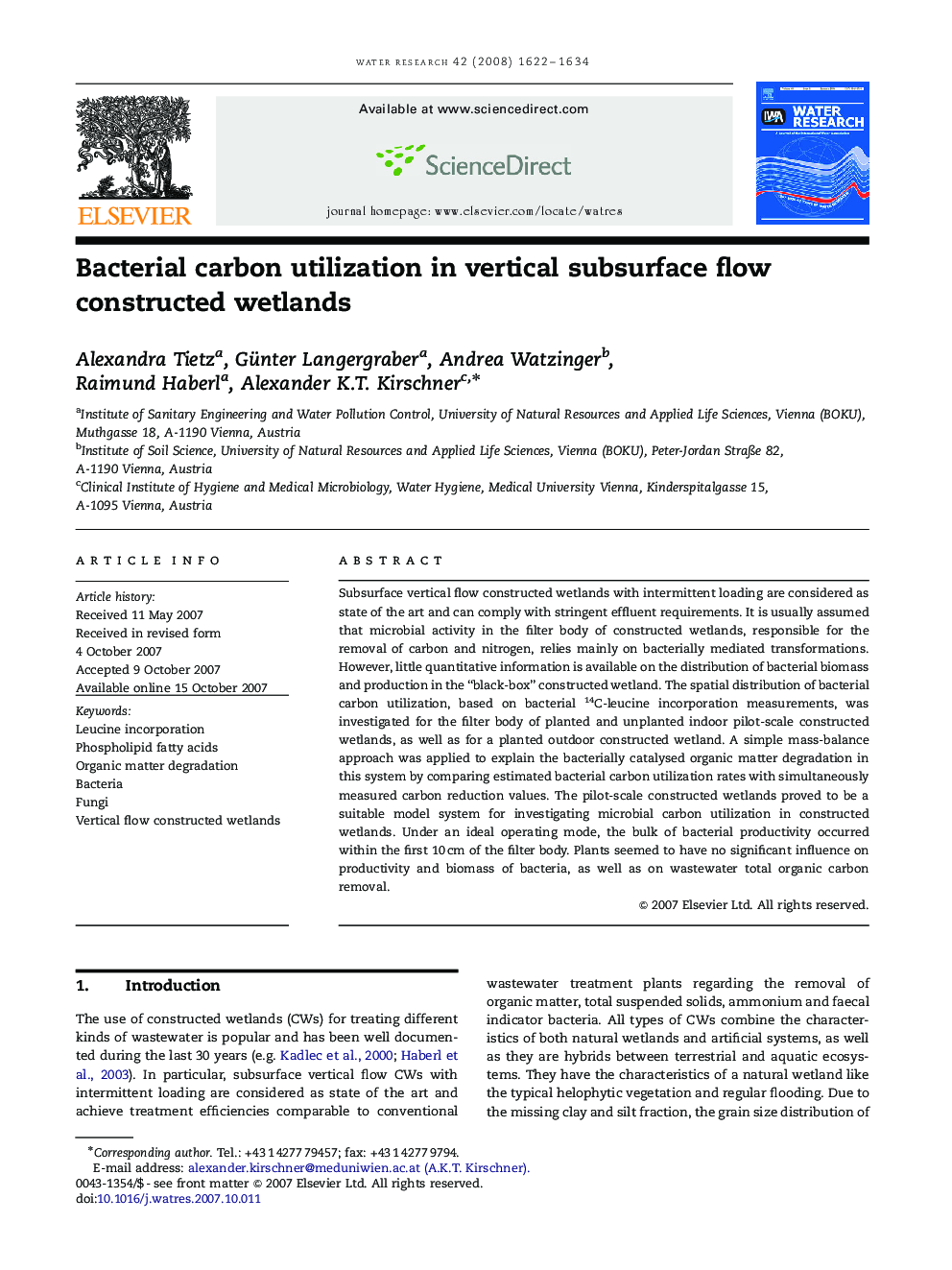| Article ID | Journal | Published Year | Pages | File Type |
|---|---|---|---|---|
| 4485050 | Water Research | 2008 | 13 Pages |
Subsurface vertical flow constructed wetlands with intermittent loading are considered as state of the art and can comply with stringent effluent requirements. It is usually assumed that microbial activity in the filter body of constructed wetlands, responsible for the removal of carbon and nitrogen, relies mainly on bacterially mediated transformations. However, little quantitative information is available on the distribution of bacterial biomass and production in the “black-box” constructed wetland. The spatial distribution of bacterial carbon utilization, based on bacterial 14C-leucine incorporation measurements, was investigated for the filter body of planted and unplanted indoor pilot-scale constructed wetlands, as well as for a planted outdoor constructed wetland. A simple mass-balance approach was applied to explain the bacterially catalysed organic matter degradation in this system by comparing estimated bacterial carbon utilization rates with simultaneously measured carbon reduction values. The pilot-scale constructed wetlands proved to be a suitable model system for investigating microbial carbon utilization in constructed wetlands. Under an ideal operating mode, the bulk of bacterial productivity occurred within the first 10 cm of the filter body. Plants seemed to have no significant influence on productivity and biomass of bacteria, as well as on wastewater total organic carbon removal.
